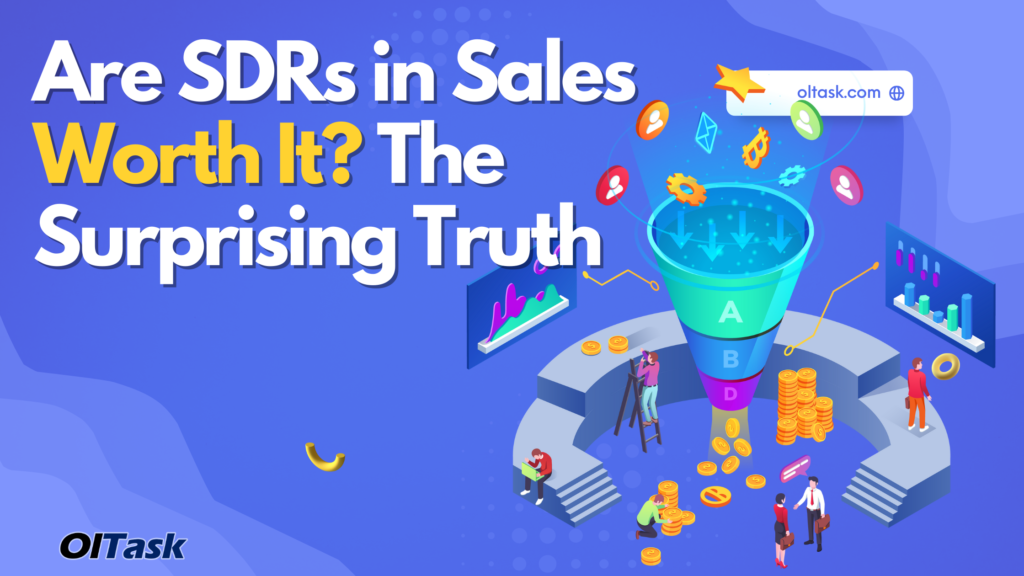Sdr Definition Sales: Understanding The Role And Importance In Modern Business
In today's competitive business landscape, the role of SDR (Sales Development Representative) has become increasingly vital for companies aiming to scale their sales processes effectively. An SDR is a crucial link between lead generation and closing deals, playing a pivotal role in driving revenue growth. As businesses continue to evolve, understanding the SDR definition sales and its impact on sales strategies is essential for organizations aiming to thrive in the modern marketplace.
The term "SDR" has gained prominence in recent years, with companies recognizing the need for specialized roles dedicated to nurturing leads and converting them into paying customers. By focusing on outbound and inbound lead generation, SDRs lay the foundation for successful sales cycles, ensuring that sales teams are equipped with high-quality leads ready for conversion.
In this article, we will explore the SDR definition sales in-depth, examining its responsibilities, best practices, and the skills required to excel in this role. Whether you're a business owner, sales professional, or someone interested in pursuing a career in sales development, this comprehensive guide will provide you with the insights you need to succeed.
Read also:Did The Rock Dwayne Johnson Really Die Unveiling The Truth Behind The Rumors
Table of Contents
- What is SDR in Sales?
- Role and Responsibilities of an SDR
- Difference Between SDR and Account Executive
- Key Skills Required for an SDR
- The SDR Sales Process
- Essential Tools for SDRs
- Metrics and KPIs to Measure SDR Performance
- Common Challenges Faced by SDRs
- Tips for SDR Success
- The Future of SDR in Sales
What is SDR in Sales?
The SDR definition sales refers to Sales Development Representatives, professionals who focus on identifying, qualifying, and nurturing potential leads to prepare them for the next stage of the sales funnel. Unlike traditional sales roles, SDRs concentrate on lead generation rather than closing deals. Their primary responsibility is to create opportunities for the sales team by engaging with prospects through outbound and inbound efforts.
SDRs play a critical role in modern sales organizations, bridging the gap between marketing and sales teams. They ensure that high-quality leads are passed on to account executives, who then focus on converting these leads into paying customers. By specializing in lead qualification, SDRs help streamline the sales process, making it more efficient and scalable.
Why SDRs are Important in Business
- They help identify high-potential leads that can drive revenue growth.
- They allow account executives to focus on closing deals rather than lead generation.
- They improve collaboration between marketing and sales teams.
- They contribute to a more structured and predictable sales pipeline.
Role and Responsibilities of an SDR
Understanding the role of an SDR is essential for businesses looking to implement effective sales strategies. The primary responsibilities of an SDR include prospecting, lead qualification, and nurturing relationships with potential customers. Below are some of the key duties of an SDR:
Key Responsibilities
- Prospecting: Identifying potential customers through research and outreach efforts.
- Lead Qualification: Assessing the quality of leads based on predefined criteria to determine their readiness for the next stage of the sales process.
- Outbound and Inbound Outreach: Engaging with prospects through phone calls, emails, and other communication channels.
- Collaboration with Marketing: Working closely with marketing teams to ensure alignment between lead generation efforts and sales strategies.
SDRs must possess excellent communication and interpersonal skills to effectively engage with prospects and build meaningful relationships. Their ability to qualify leads accurately is crucial in ensuring that the sales team receives high-quality opportunities for conversion.
Difference Between SDR and Account Executive
One of the most common questions about SDRs is how their role differs from that of an Account Executive (AE). While both roles are integral to the sales process, they serve distinct purposes. SDRs focus on lead generation and qualification, while AEs concentrate on closing deals and maintaining customer relationships.
Key Differences
- Focus: SDRs focus on lead generation, while AEs focus on closing deals.
- Metrics: SDRs are measured by the number of qualified leads they generate, whereas AEs are evaluated based on revenue generated.
- Relationships: SDRs build initial relationships with prospects, while AEs manage long-term customer relationships.
Understanding the distinction between these roles is crucial for businesses aiming to optimize their sales processes. By clearly defining the responsibilities of SDRs and AEs, organizations can create a more efficient and effective sales team.
Read also:New Rulz Movie Kannada 2024 A Thrilling Addition To The Kannada Film Industry
Key Skills Required for an SDR
To excel as an SDR, individuals must possess a combination of technical and interpersonal skills. Below are some of the key skills required for success in this role:
Essential Skills
- Communication Skills: The ability to communicate effectively with prospects through various channels.
- Persuasion and Negotiation: The ability to persuade prospects to take the next step in the sales process.
- Time Management: Efficiently managing time to prioritize leads and maximize productivity.
- Research Skills: Conducting thorough research to identify and qualify potential leads.
Developing these skills is essential for SDRs to succeed in their roles and contribute to the overall success of the sales team.
The SDR Sales Process
The SDR sales process involves several stages, each designed to move prospects closer to becoming paying customers. Below is an overview of the typical SDR sales process:
Stages of the SDR Sales Process
- Prospecting: Identifying potential customers through research and outreach efforts.
- Outreach: Engaging with prospects through phone calls, emails, and other communication channels.
- Qualification: Assessing the quality of leads based on predefined criteria.
- Handoff: Passing qualified leads to account executives for further nurturing and conversion.
Each stage of the process requires a unique set of skills and strategies to ensure success. By following a structured approach, SDRs can maximize their effectiveness and contribute to the organization's revenue goals.
Essential Tools for SDRs
SDRs rely on a variety of tools to streamline their workflows and improve productivity. Below are some of the most commonly used tools in the SDR toolkit:
Popular SDR Tools
- CRM Software: Tools like Salesforce and HubSpot help SDRs manage leads and track interactions.
- Email Automation: Platforms like Outreach and Yesware enable SDRs to automate their email outreach efforts.
- Data Enrichment Tools: Tools like Clearbit and ZoomInfo provide SDRs with valuable insights into potential leads.
By leveraging these tools, SDRs can focus on high-value activities, such as engaging with prospects and building relationships, rather than spending time on manual tasks.
Metrics and KPIs to Measure SDR Performance
Measuring the performance of SDRs is crucial for ensuring the effectiveness of the sales process. Below are some of the key metrics and KPIs used to evaluate SDR performance:
Key Metrics
- Number of Qualified Leads: The number of leads that meet predefined qualification criteria.
- Conversion Rate: The percentage of leads that are successfully converted into opportunities.
- Response Rate: The percentage of prospects who respond to outreach efforts.
By tracking these metrics, businesses can gain valuable insights into the effectiveness of their SDR strategies and make data-driven decisions to improve performance.
Common Challenges Faced by SDRs
Despite the importance of their role, SDRs face several challenges in their day-to-day activities. Below are some of the most common challenges and how to overcome them:
Common Challenges
- Low Response Rates: SDRs often struggle with low response rates, which can be mitigated by improving outreach strategies and personalizing communication.
- Resistance from Prospects: Prospects may be hesitant to engage with SDRs, requiring SDRs to develop strong persuasion skills.
- Time Management: Managing time effectively to prioritize leads and maximize productivity can be challenging but is essential for success.
Addressing these challenges requires a combination of skills, tools, and strategies tailored to the specific needs of the SDR role.
Tips for SDR Success
To succeed as an SDR, individuals must adopt best practices that enhance their effectiveness and productivity. Below are some tips for SDR success:
Best Practices
- Personalize Outreach: Tailor your communication to the specific needs and interests of each prospect.
- Stay Organized: Use CRM tools to keep track of leads and interactions, ensuring nothing falls through the cracks.
- Continuously Learn: Stay up-to-date with industry trends and best practices to improve your skills and knowledge.
By following these tips, SDRs can maximize their impact and contribute to the success of their organizations.
The Future of SDR in Sales
As technology continues to evolve, the role of SDRs is likely to change in response to new tools and strategies. Automation, artificial intelligence, and data analytics are expected to play a significant role in shaping the future of SDRs, enabling them to work more efficiently and effectively.
Despite these advancements, the human element of SDRs will remain crucial in building relationships and engaging with prospects. By embracing new technologies and adapting to changing market conditions, SDRs can continue to play a vital role in driving revenue growth for businesses.
Conclusion
In conclusion, understanding the SDR definition sales and its importance in modern business is essential for organizations aiming to succeed in today's competitive marketplace. By leveraging the skills and tools available to SDRs, businesses can optimize their sales processes and drive revenue growth. As the role of SDRs continues to evolve, staying informed about industry trends and best practices will be crucial for success.
We encourage readers to share their thoughts and experiences in the comments section below. Additionally, feel free to explore other articles on our site for more insights into sales strategies and best practices.
Article Recommendations


